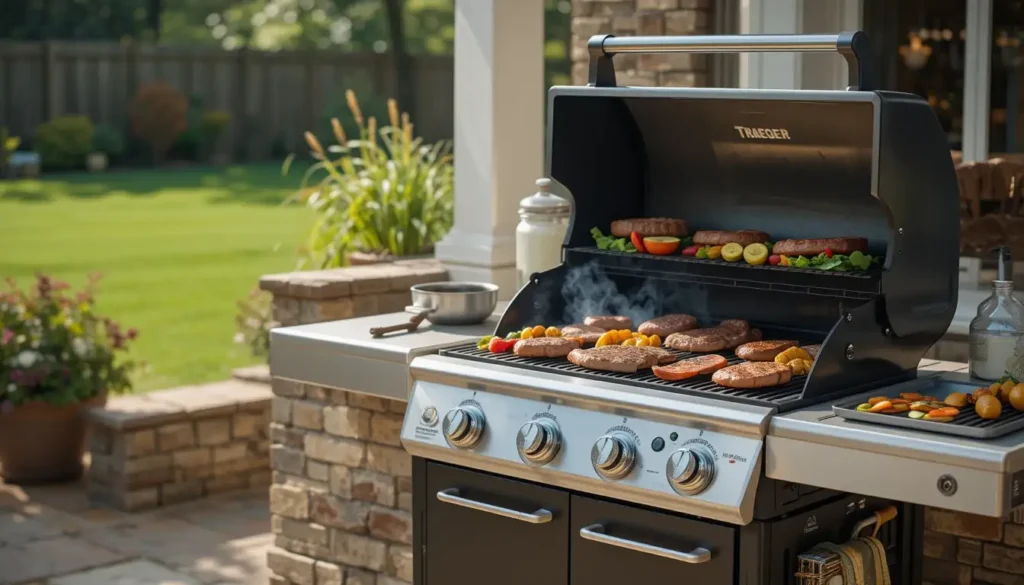Traeger grills are renowned for high-quality wood pellet grilling and rich, smoky flavors, but many wonder, “Can Traeger be used as a regular grill?” Though primarily marketed as pellet smokers, Traegers are versatile and well-suited for tasks like searing steaks or grilling burgers. However, understanding their unique features is key to using them effectively.
This article explores how Traeger grills work, their pros and cons versus traditional grills, and tips to maximize their grilling potential, helping you decide if they’re right for your needs.
Table of Contents
Understanding How Traeger Grills Work
Traeger grills are a unique cooking appliance that combines the precision of modern technology with the timeless flavor of wood-fired cooking. To better understand whether they can be used as a regular grill, it’s essential to first learn how they operate and what sets them apart.
What Sets Traeger Grills Apart
Traeger grills differ significantly from traditional gas or charcoal grills. Instead of relying on propane, natural gas, or charcoal, they use wood pellets as their primary fuel source. These pellets are fed into the grill’s firepot by an automatic auger system. The pellets ignite and produce consistent heat and smoke, controlled by a digital thermostat.
This system ensures even heat distribution, making it perfect for cooking various dishes without the need for constant monitoring. The ability to precisely control the temperature—something uncommon with traditional grills—gives Traeger a significant edge in versatility.
Heat Control and Cooking Versatility
Traeger grills allow users to set and maintain precise temperatures, ranging from as low as 165°F for slow smoking to as high as 500°F for searing. This wide temperature range makes them capable of performing tasks typically associated with regular grills, such as grilling burgers, steaks, and vegetables.
Unlike traditional grills that rely heavily on direct heat, Traeger grills excel in both indirect and direct heat cooking. This versatility means you can switch between low-and-slow cooking methods for ribs and briskets and high-temperature grilling for a quick weeknight dinner.
Advantages of Using Wood Pellets
The wood pellets used in Traeger grills aren’t just a fuel source; they’re a key component of the cooking experience. These pellets come in various flavors, such as hickory, mesquite, and cherry, allowing users to customize the taste of their food. The steady combustion of the pellets ensures a clean and consistent burn, reducing the risk of flare-ups commonly associated with traditional grilling.
Moreover, the smoky flavor imparted by the wood pellets enhances the taste of grilled food, adding a depth of flavor that’s difficult to achieve with gas or charcoal. This makes Traeger grills an appealing choice for those who value taste and creativity in their cooking.
Using a Traeger as a Regular Grill
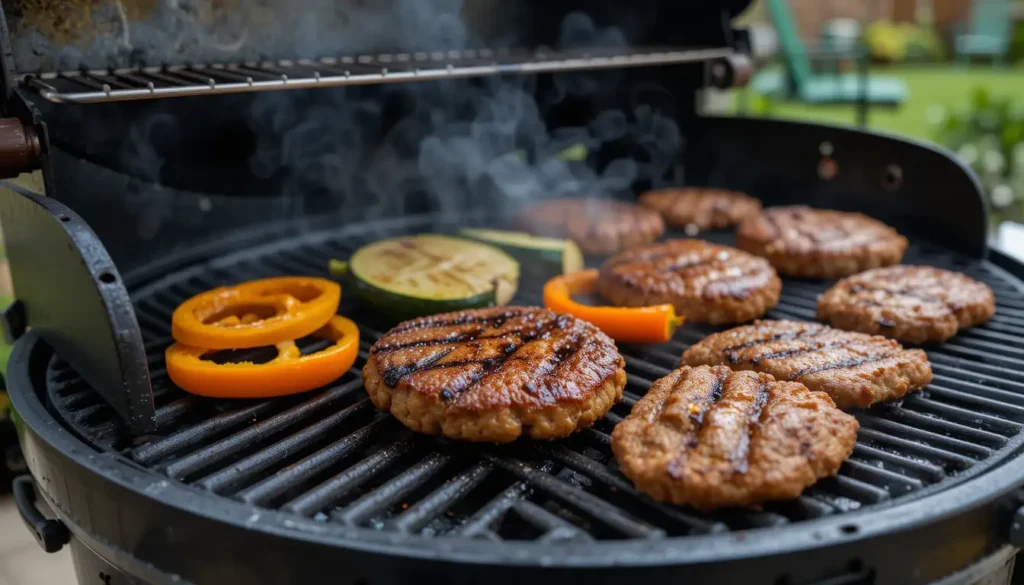
Traeger grills may be renowned for their smoking capabilities, but they are equally adept at serving as regular grills. By leveraging their temperature control, cooking surface, and unique pellet-fueled system, Traeger grills can handle everyday grilling tasks with ease. Let’s dive into how you can use a Traeger for typical grilling scenarios.
High-Temperature Cooking Capabilities
One of the hallmarks of a regular grill is its ability to achieve high heat quickly, which is essential for tasks like searing steaks or grilling burgers. Traeger grills are designed to reach temperatures up to 500°F, making them comparable to most gas and charcoal grills.
For grilling enthusiasts who value the classic sear marks and crispy edges, Traeger’s ability to hold high temperatures steadily is a game-changer. Whether you’re flipping steaks or preparing a quick batch of kabobs, the high-heat setting on a Traeger provides the charred finish many grill masters seek.
Direct and Indirect Heat Options
Traditional grills typically rely on direct heat, where food is placed directly above the flames. While Traeger grills operate primarily with indirect heat, their design allows for grilling with both methods:
- Direct Heat: By using the grill grates and cooking at high temperatures, you can achieve the classic grilling effect. Some models also feature accessories like grill plates to enhance direct heat cooking.
- Indirect Heat: Perfect for cooking delicate items such as fish or for recipes requiring slower cooking, indirect heat evenly surrounds the food, reducing the risk of overcooking or burning.
The ability to toggle between direct and indirect heat cooking gives Traeger an advantage for both regular grilling and smoking.
Achieving Traditional Grill Marks
One of the aesthetic and flavorful appeals of grilling is the creation of those iconic grill marks on food. While Traeger grills may not use open flames like traditional grills, they can still deliver grill marks effectively. The cast-iron or porcelain-coated grates retain heat exceptionally well, allowing food to sear where it touches the surface.
To enhance grill marks:
- Preheat the grill for at least 10-15 minutes on the high-heat setting.
- Avoid flipping food too often—let it rest on the hot grates for a few minutes before turning.
- Use oil or marinade on your protein to prevent sticking and promote even charring.
Preparing for Quick Weeknight Grilling
Traeger grills are well-suited for fast and efficient meals. Whether you’re grilling chicken breasts, vegetables, or even hotdogs, the straightforward controls make it easy to preheat and cook within a short timeframe. Additionally, the consistent heat distribution reduces the need for constant supervision, allowing you to multitask without worrying about uneven cooking.
Traeger Grills vs. Traditional Grills
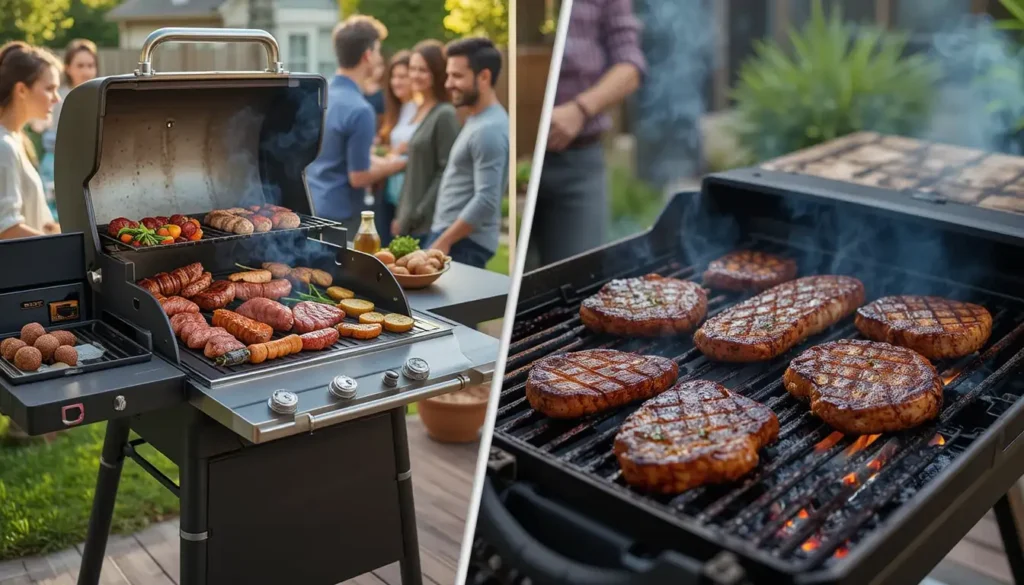
When comparing Traeger grills to traditional grills, it’s important to evaluate their differences in fuel type, cooking methods, and overall functionality. While both serve the purpose of grilling and cooking outdoors, they offer unique experiences that cater to different preferences and needs.
Comparing Fuel Types: Wood Pellets vs. Gas/Charcoal
One of the biggest distinctions between Traeger grills and traditional grills is the type of fuel they use:
- Traeger Grills: Powered by wood pellets, Traeger grills produce a steady, clean burn and infuse food with natural smoky flavors. The type of wood pellets—like oak, hickory, or apple—can be chosen to complement the dish you’re cooking.
- Gas Grills: These are fueled by propane or natural gas, offering quick ignition and high heat without any smoky flavor. They’re great for convenience but lack the depth of taste wood-fueled grills provide.
- Charcoal Grills: Known for imparting a classic, slightly charred flavor, charcoal grills require more effort to light and maintain but are a favorite for traditionalists.
The choice of fuel often depends on the level of flavor enhancement desired, ease of use, and budget.
Cooking Speed and Temperature Range
Traditional grills, especially gas models, are known for their quick preheat times, often reaching high temperatures in minutes. Traeger grills, on the other hand, take slightly longer to preheat due to the wood pellet ignition process. This difference may be a consideration for users who value speed over flavor.
In terms of temperature range:
- Traeger grills offer precision with settings between 165°F to 500°F, ideal for both low-and-slow smoking and high-heat grilling.
- Gas and charcoal grills typically offer less precision but excel at achieving extreme heat for tasks like flash searing or stir-frying.
For general grilling purposes, the temperature capabilities of a Traeger are more than sufficient, but traditional grills might have a slight edge for users who prioritize ultra-high heat cooking.
Maintenance and Cleaning
Another key difference lies in maintenance and cleaning:
- Traeger Grills: Cleaning involves emptying the ash from the firepot, wiping the grease pan, and occasionally vacuuming out pellet debris. While this might seem time-intensive, it ensures optimal performance and flavor consistency.
- Gas Grills: Gas grills require cleaning the grates and occasionally clearing burner tubes of clogs, but the process is relatively straightforward.
- Charcoal Grills: These demand the most cleaning effort, as ash and leftover briquettes must be removed after each use.
In terms of upkeep, Traeger grills strike a balance, offering easier maintenance than charcoal grills while providing more flavor-enhancing benefits than gas models.
Versatility and Multifunctionality
A significant advantage of Traeger grills is their multifunctionality. They’re not limited to grilling; they can also smoke, bake, roast, and braise. For example, you can use a Traeger to bake a pizza or slow-cook a pork shoulder—tasks that traditional grills might struggle to achieve without additional accessories.
Traditional grills excel at straightforward grilling tasks but lack the versatility that a Traeger offers. If you’re looking for an all-in-one cooking solution, Traeger’s wide range of functions makes it a standout option.
By comparing the strengths and weaknesses of Traeger grills and traditional grills, it’s clear that each has its own advantages. The right choice depends on whether you value versatility and flavor over speed and simplicity.
Benefits of Using Traeger Grills for Regular Grilling
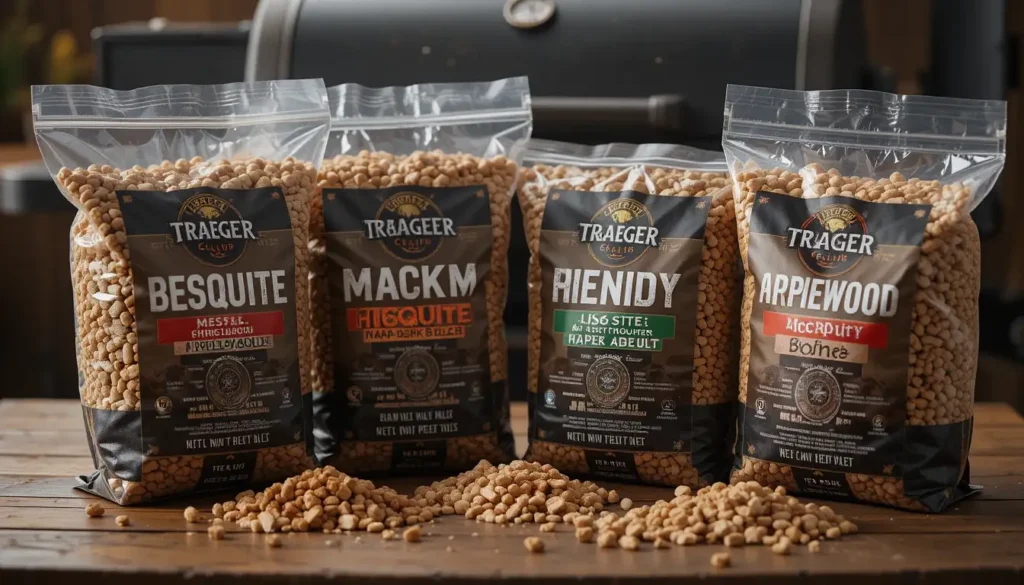
Traeger grills offer a range of benefits that make them a fantastic choice for regular grilling. From enhanced flavor to consistent cooking performance, they stand out as a versatile option for both casual and seasoned grillers.
Flavor Enhancement from Wood Smoke
Traeger grills stand out for their ability to infuse food with distinct wood-smoke flavors, unlike gas or charcoal grills. Hickory pellets add bold, earthy notes to steaks, while applewood offers a sweet, fruity essence to chicken, giving cooks the flexibility to experiment and elevate their meals.
Consistency and Precision in Cooking
Traeger grills are equipped with advanced digital controllers that allow users to set and maintain precise cooking temperatures. This consistency ensures that every dish is cooked evenly, eliminating the risk of undercooking or burning—a common challenge with traditional grills.
For regular grilling tasks, such as cooking chicken breasts, vegetables, or burgers, this precision is invaluable. You can confidently grill food without needing to check constantly, making it ideal for multitasking during busy gatherings or weeknight dinners.
Multifunctionality Beyond Grilling
Traeger grills are not limited to grilling alone. They can also smoke, bake, roast, and even braise. This multifunctionality allows users to prepare a wide variety of dishes beyond the scope of traditional grills. Some examples include:
- Baking: Cook pizzas, pies, and even cookies with a smoky twist.
- Smoking: Perfect for briskets, ribs, and other slow-cooked meats.
- Roasting: Ideal for preparing whole chickens or turkeys.
- Braising: Adds flavor and tenderness to tougher cuts of meat.
This versatility makes Traeger grills a great investment for those who love to explore different cooking techniques without needing multiple appliances.
User-Friendly Design
Traeger grills prioritize convenience with automated pellet feeding and digital temperature controls, making them easy for beginners and experienced grillers alike. Features like WiFIRE technology let users monitor and adjust settings via smartphone, appealing to tech-savvy cooks.
Healthier Cooking Options
Traeger grills’ indirect heat and even temperature reduce flare-ups, making them a healthier option than open-flame grills. They also produce less smoke than charcoal grills, ideal for residential areas. With superior flavor, convenience, and versatility, Traegers are a top choice for consistent and multifunctional outdoor cooking.
Potential Drawbacks to Consider When Using a Traeger Grill
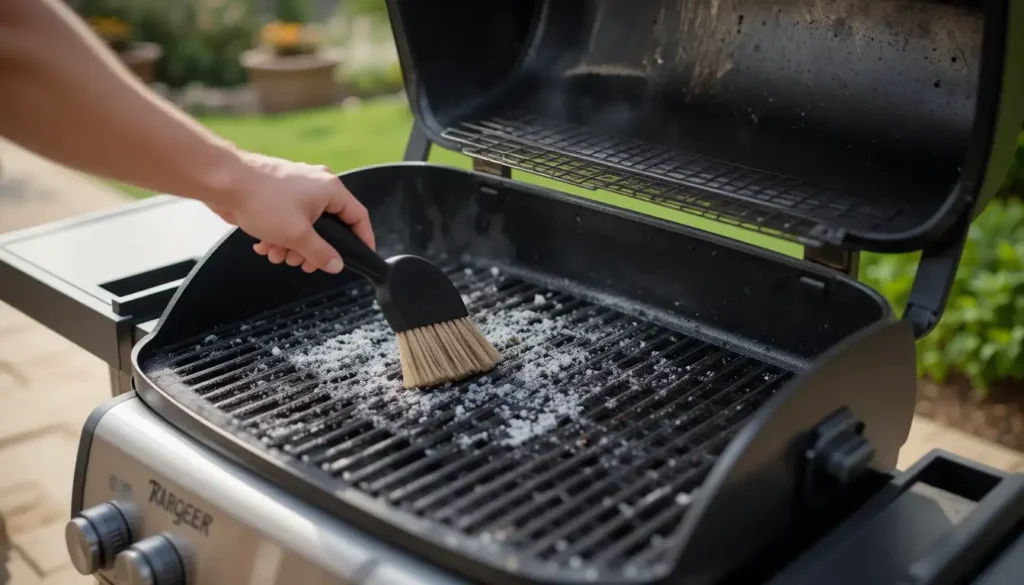
While Traeger grills offer numerous advantages for regular grilling, they are not without their limitations. Understanding these drawbacks can help you make an informed decision about whether a Traeger is the right choice for your grilling needs.
Heating Time Compared to Traditional Grills
A common critique of Traeger grills is their longer preheating time, taking 15–20 minutes compared to 5–10 minutes for gas grills. While this delay may inconvenience those used to instant heat, the enhanced flavor and consistent results often make up for it.
Initial Cost and Fuel Expenses
Traeger grills are generally more expensive than traditional gas or charcoal grills. Entry-level models are starting around $400 and premium models costing over $1,000. This higher price point can be a barrier for budget-conscious buyers.
In addition, wood pellets, while affordable in the short term, can add up over time if you grill frequently. A 20-pound bag of wood pellets typically costs $15–$20 and lasts for about 10 hours of cooking. By comparison, a propane tank or a bag of charcoal may last longer for less frequent grillers.
Lack of Open Flame
Grill enthusiasts who enjoy intense searing and charring from open flames may find Traeger grills slightly limiting, as they rely on indirect heat rather than direct flame.
However, this can be mitigated by using a cast-iron skillet or grill grates designed for high-heat searing, allowing you to achieve a similar effect.
Size and Portability
Traeger grills are larger and heavier than many traditional grills, which can make them less portable. While they are excellent for backyard use, they might not be the best option for tailgating or camping trips where space and mobility are key factors.
Some compact models are available for more portable use, but they may lack the cooking capacity and features of larger Traeger grills.
Learning Curve for Beginners
While Traeger grills are designed to be user-friendly, there is a slight learning curve for those new to pellet grilling. Adjusting to the longer preheat times, understanding pellet consumption, and mastering indirect heat cooking might take some time for beginners.
However, most users quickly adapt, and the grill’s digital controls and resources—like online recipes and mobile app support—make the transition smoother.
Despite these drawbacks, Traeger grills remain a popular choice for their versatility and flavor-enhancing capabilities. Knowing these potential challenges ahead of time can help you decide if the investment aligns with your grilling style and priorities.
Frequently Asked Questions (FAQs)
Can I sear steaks on a Traeger grill?
Yes, you can sear steaks on a Traeger grill. While it uses indirect heat, Traeger grills can reach temperatures of up to 500°F, which is sufficient for searing. Using cast-iron grill grates or a searing kit can enhance the searing effect by retaining more heat for better grill marks.
How does the flavor differ from traditional grills?
Traeger grills offer rich, complex flavors from wood pellets, adding smoky notes gas or charcoal grills can’t replicate. You can also customize taste with pellet flavors like mesquite, cherry, or hickory.
Can I Grill Without Smoking on a Traeger? Exploring Traeger Grill Regular Grilling Capabilities
Yes, you can grill without smoking on a Traeger. By setting the grill to higher temperatures (above 350°F), you reduce the amount of smoke produced, resulting in a cleaner flavor. This setting is ideal for regular grilling tasks like cooking burgers, chicken, or vegetables.
Is a Traeger grill worth the investment for casual grillers?
Traeger grills are worth the investment if you value flavor, versatility, and consistent cooking performance. Though pricier upfront, their ability to grill, smoke, bake, and roast makes them a versatile tool for outdoor cooks.
What is the lifespan of a Traeger grill?
With proper maintenance and care, a Traeger grill can last for 8–10 years or more. Regular cleaning of the firepot, grease tray, and pellet hopper, along with proper storage, can significantly extend the grill’s lifespan.
Can I bake pizzas or desserts on a Traeger?
Absolutely! Traeger grills can bake pizzas, cakes, cookies, and other desserts with ease. The even heat distribution and smoky undertones. Not only add a unique flavor to baked goods but also make them a consistent favorite among Traeger users.
Conclusion
In conclusion, Traeger grills can function as regular grills, offering high heat for grilling and the bonus of wood smoked flavor. Their versatility, precision, and flavor enhancement make them a great choice for grilling enthusiasts.
From searing steaks to baking pizzas, Traegers deliver consistent results and a premium cooking experience. Despite a higher price and a slight learning curve, their benefits often outweigh these drawbacks, making them a versatile tool for all your grilling needs.
Learn how to get the most out of your Traeger by checking out what is good to cook on a Traeger, including versatile recipes for every occasion.

